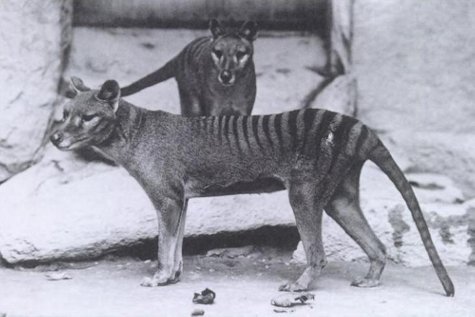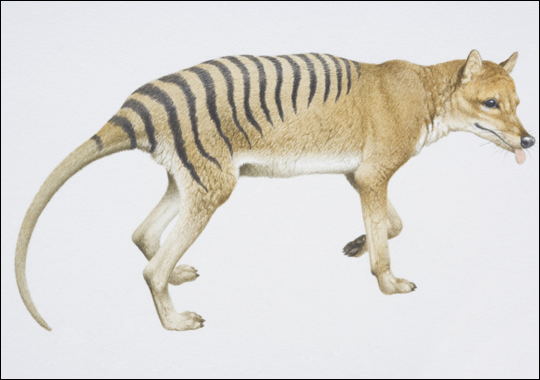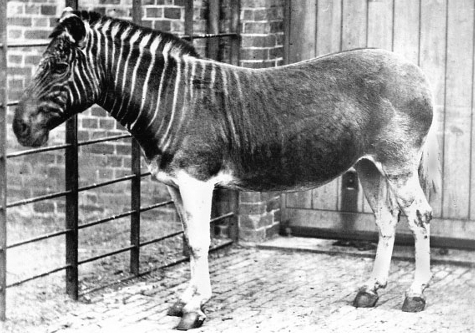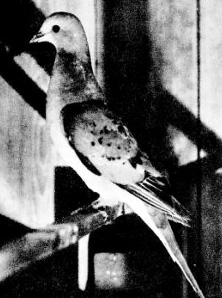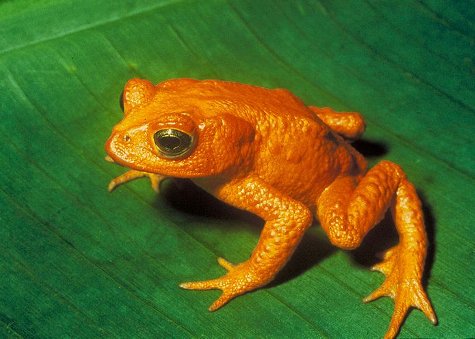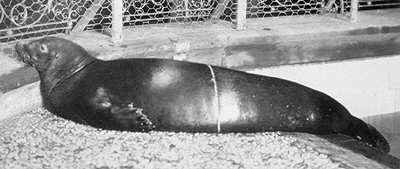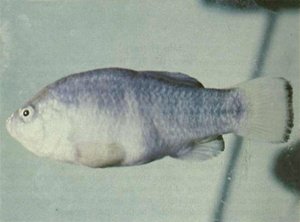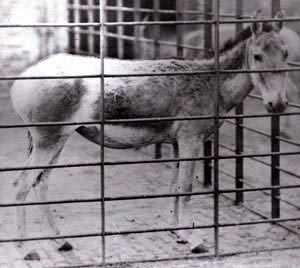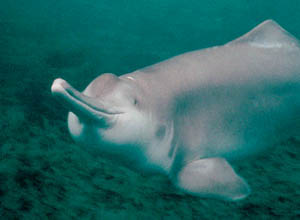The Urinalysis
- About the Urinalysis
- Urinary Dip Stick Test
- Tips on Collecting a Urine Sample
- Urine Volume
- Urine pH
- Urine Specific Gravity
- Urine Glucose
- Urine Blood
- Urine Bilirubin
- Urine Nitrates
- Urine Leukocytes
- Urine Sediment from Centrifugation
- Urinary Crystals
- Urinary Casts
- Urinary Artifacts
The Urinalysis: The urinalysis measures the presence and amount of a number of chemicals in the urine, which reflect much about the health of the kidneys, along with cells that may be present in the urine. We try to identify crystals, bacteria, yeast, red cells, white cells (indicating infection), something called a cast (which is a clump of sloughed cells from inside the tiny renal filtration tubules), sperm and even the occasional parasite. This lets us know if we are dealing with infection, diet or metabolism disorders, and what part of the urinary system is in trouble. Also, veterinarians—or in human medicine—the lab, looks for crystals, bacteria, and other organisms in the urinary sediment. Each of these elements give hints as to function of the kidneys, kidney tubules, ureters (small tubes that connect the kidneys with the urinary bladder), and the urinary bladder.
The first part of a urinalysis is direct visual observation. Normal, fresh urine is pale to dark yellow or amber in color and clear. Normal urine volume is 750 to 2000 ml/24hr.
Turbidity or cloudiness may be caused by excessive cellular material or protein in the urine or may develop from crystallization or precipitation of salts upon standing at room temperature or in the refrigerator which is usually of no significance. Clearing of the specimen after addition of a small amount of acid indicates that precipitation of salts is the probable cause of turbidity.
Urine is normally transparent in most animals, except for the horse. The horse has a thick viscous urine that is cloudy on examination. In small animals, turbidity suggests the presence of cells, casts, or crystals.
A red or red-brown (abnormal) color could be from a food dye, eating fresh beets, a drug, or the presence of either hemoglobin or myoglobin. If the sample contained many red blood cells, it would be cloudy as well as red.
Urine Odor: Urine has a characteristic smell that varies slightly by species and concentration of the sample. A particularly foul odor may occur in the presence of bacteria. Thus, strong smelling urine is common in cases of cystitis. Ketonuria (ketones are produced when tissues are breaking down like in the process of starvation) produces a very sweet smell as does Glucosuria (sugar in the urine from diabetes). Sweet smelling urine is commonly associated with acetonemia (acetones in the urine), pregnancy toxemia, and diabetes mellitus.
Urinary Dip Stick Test:

The Urine Dipstick Test
Urine tests are typically evaluated with a reagent strip that is briefly dipped into the urine sample. The technician reads the colors of each test and compares them with a reference chart.
- Glucose (Tests for diabetes)
- Bilirubins (Tests for liver disease and biliary obstruction)
- Ketones (Tests for fat breakdown products, insulin deficiency, starvation)
- Specific gravity (To see if the kidney is concentrating the urine)
- Blood (Infection or irritation-or mensus/heat cycles)
- pH (Tells us what kinds of stones may be present if this is abnormal—additional test gives more information)
- Protein (Tests for integrity of the filtering system-kidney filtration and tubules)
- Urobininogen (Increased values mean liver damage, excessive RBC breakdown, internal bleeding, poisoning)
- Nitrites (A test for some bacterial infections)
- Leukocytes (White blood cells indicating infection or cancer)
The urine is then spun down and the sediment checked for cells, yeast, bacteria, crystals, and casts (groups of dead cells that indicate kidney tubule damage). We’ll talk about those below.
Here are some tips on collecting the urine sample for the urinalysis:
If you are doing a free-catch sample for urinalysis, it is nice to have some urine caught in the beginning, middle and end of the urination process. Why? The first fraction coming out flushes cells, yeast and bacteria from the vulva or prepuce areas and the urethra (the tube that connects the bladder to the outside world). The middle fraction is a better picture of what has been stored in the bladder. The tail-end of the sample gives a better idea of how the kidneys look.
My personal choice as a veterinarian is to stick a long needle directly into the bladder so I don’t have to guess if the bacteria, yeast and dead cells are from the urethra or the bladder. It doesn’t hurt much and helps alleviate contamination of the sample. That way I can treat the core cause instead of a secondary infection of some type. Medical doctors sometimes insert a catheter into the bladder for this reason.
If you are trying to get a sample from your pet at home, one easy way to do it is to tape a small cup to the bottom of the ruler. As the pet urinates, you can slip the cup underneath them without leaning over and startling them. Label the sample with the date and time it was collected then get the sample to your vet right away for testing.
Urine Volume:
Urinalysis Increased Urine Volume (Polyuria): Rule out acute renal disease, chronic renal disease, diabetes mellitus hepatic failure, hyperadrenoorticism, hypercalcemia, hyperparathyroidism (cats and humans), nephrogenic diabetes insipidus, pituitary diabetes insipidus, post obstructive diuresis, primary renal glyosuria, psychogenic polydipsia, pyelonephritis, and pyometra.
Urinalysis Decreased Urine Volume (Oliguria): Rule out acute renal failure, dehydration, shock, terminal chronic renal disease, and urinary tract obstruction.
Urinalysis pH: pH is a measure of hydrogen ion concentration (acidity or alkalinity) of the urine. Fresh samples are necessary for an accurate reading because urine becomes alkaline when it is older because the carbon dioxide escapes and the bacteria in the urine convert urea to ammonia which is very alkaline. The healthy, normal pH of human urine is less than 7. The glomerular filtrate of blood plasma is usually acidified by renal tubules and collecting ducts from a pH of 7.4 to about 6 in the final urine. However, depending on the acid-base status, urinary pH may range from as low as 4.5 to as high as 8.0. The change to the acid side of 7.4 is accomplished in the distal convoluted tubule and the collecting duct.
Urinalysis interpretation of crystals in the sediment:
For the crystals formed in acid, neutral or alkaline pH, see my handout:
Urinary pH Too High (Alkaline): Rule out diets high in vegetables and urinary tract infections (the bacteria convert the urine to ammonia). Note: This is the only instance where I tell people to eat lots of protein and junk food for 2-3 days!
Urinary pH Too Low (Acid): Rule out diets high in protein and refined carbohydrates, anorexia, and starvation.
Urinalysis Specific Gravity (SG): This measures how dilute your urine is. Specific gravity takes into account the weight of the urine and particle size. Water would have a specific gravity of 1.000 Specific gravity between 1.002 and 1.035 on a random sample should be considered normal if kidney function is normal. Most human urine is around 1.010, but it can vary greatly depending on when you drank fluids last, or if you are dehydrated.
If the specific gravity is not > 1.022 after a 12 hour period without food or water, renal concentrating ability is impaired and the patient either has generalized renal impairment or nephrogenic diabetes insipidus. In end-stage renal disease, specific gravity tends to become 1.007 to 1.010.
Any urine having a specific gravity over 1.035 is either contaminated, contains very high levels of glucose, or the patient may have recently received high density radiopaque dyes intravenously for radiographic studies or low molecular weight dextran solutions.

Urine Refractometer
Most laboratories measure specific gravity with a refractometer (see above picture).
Glucose in the Urinalysis: Normally there is no glucose in urine.
Detectable Glucose (Glucosuria): Rule out diabetes mellitus, kidney disease (decreased tubular reabsorption), acromegaly, hyperpituitarism, bovine milk fever, bovine neurologic disease, excessive insulin dosage, fear or exertional catecholamine release, Fanconi-like syndrome (which can be caused by taking expired tetracycline), moribund animals, sheep endotoxemia, and drugs such as ACTH, glucocorticoids, fluids, Ketamine, morphine, phenothiazine, and xylazine. A small number of people have glucose in their urine with normal blood glucose levels, however any glucose in the urine would raise the possibility of diabetes or glucose intolerance.
Dipsticks employing the glucose oxidase reaction for screening are specific for glucose but can miss other reducing sugars such as galactose and fructose. For this reason, most newborn and infant urines are routinely screened for reducing sugars by methods other than glucose oxidase (such as the Clinitest, a modified Benedict’s copper reduction test). I don’t remember learning about these tests when I took clinical pathology in veterinary school.
Protein (Proteinuria): When you urinate and see foam in the toilet bowl, this can indicate either sugar or protein and is not normal. A urinalysis and bloodwork are used to determine what the problem is. Talk with your doctor if you see this. Normally there is no protein detectable on a urinalysis strip.
Detectable Protein in the Urinalysis test: Rule out kidney damage, increased glomerular permeability (from fever, cardiac disease, central nervous system disease, shock, muscular exertion), blood in the urine, inflammation, cancers, infection. High concentrations of very small proteins can also show up in the urine such as Bence Jones protein (a sign of cancer), hemoglobin monomers, and myoglobin. Up to 10% of children can have protein in their urine. Sometimes this is due to colostral antibodies.
Certain diseases require the use of a special, more sensitive (and more expensive) test for protein called a microalbumin test. A microalbumin test is very useful in screening for early damage to the kidneys from diabetes.
False Positive causes: Rule out urine too alkaline.
Blood in the Urine (Hematuria): Normally there is no blood in the urine.
Detectable Blood in the Urine: Rule out infection, kidney stones, trauma, and bleeding from bladder or kidney tumors. The technician may indicate whether the blood is hemolyzed (dissolved blood) or non-hemolyzed (intact red blood cells).
False Positive causes: Rarely, muscle injury can cause myoglobin to appear in the urine which also causes the reagent pad to falsely indicate blood.
Bilirubin in the Urine (Bilirubinuria): Normally there is no bilirubin or urobilinogen in the urine in a normal urinalysis. These are pigments that are cleared by the liver.
Detectable Bilirubin: Rule out liver or gallbladder disease, obstruction of bile flow, intravascular hemolysis, hemoglobinuria, and tubular cell conjugation of free bilirubin.
False positives: Urine color may interfere with the reading of this test.
Nitrates in the Urine: Normally negative, the presence of nitrates usually indicates a urinary tract infection caused from nitrate reducing bacteria including Veillonellae, Haemophilus, Staphylococci, Corynebacteria, Lactobacilli, Flavobacteria and Fusobacteria. Gram negative rods such as E. coli are more likely to give a positive test.
Leukocytes in the Urine (Leukocyte esterase): Normally negative. Leukocytes are the white blood cells (or pus cells). If you see these, you have to rule out infection of some kind.

Urine Leucocytes
Sediment in the Urinalysis: Here the doctor, nurse, or lab technician looks under a microscope at a portion of your urine that has been spun in a centrifuge. A sample of well-mixed urine (usually 10-15 ml) is centrifuged in a test tube at relatively low speed (about 2-3,000 rpm) for 5-10 minutes until a moderately cohesive button is produced at the bottom of the tube. The supernate is decanted and a volume of 0.2 to 0.5 ml is left inside the tube. The sediment is resuspended in the remaining supernate by flicking the bottom of the tube several times. A drop of re-suspended sediment is poured onto a glass slide and cover-slipped.
The sediment is first examined under low power to identify most crystals, casts, squamous cells, and other large objects. The numbers of casts seen are usually reported as number of each type found per low power field.
Next, examination is carried out at high power to identify crystals, cells, and bacteria. The various types of cells are usually described as the number of each type found per average high power field (HPF). Example: 1-5 WBC/HPF.
Items such as mucous, Mucus is a frequent finding of the urinary sediment. The exact function of mucus is unknown. Some think that this substance is a protection against bacterial infection. This action is done by coating the bacterial pili (hair like things covering some bacteria which make them sticky), essential to colonization of the lower urinary tract wall. The mucus coated bacteria are eliminated through micturition (urinating). Mucus can also protect the lower urinary tract against irritating chemical agents.

Urine Mucous
Mucus forming cells are found scattered all over the urinary tract from the ascending section of the Loop of Henle in the kidney tubules (the filtering system of the kidney) to the bladder. Consequently, mucus can originate from the kidney or from the lower urinary tract. Mucus originating from the kidney is made of Tamm-Horsfall protein. This explains the frequent association of mucus threads and casts. In elderly patients, mucus is a frequent finding and seems to originate from the lower urinary tract.
In the majority of cases, presence of mucus threads is nothing to worry about however, an irritating factor could stimulate mucus secretion.
Blood in the urine, also called hematuria is the presence of abnormal numbers of red cells in urine and is caused from:
- Acute Tubular Necrosis
- Glomerular Damage
- Kidney Trauma
- Nephrotoxins
- Physical Stress
- Renal Infarcts
- Tumors which erode the urinary tract anywhere along its length
- Upper and Lower Urinary Tract Infections (UTI’s)
- Urinary Tract Stones
Red cells may also contaminate the urine from the vagina in menstruating women or from trauma produced by bladder catheterization. Theoretically, no red cells should be found, but some find their way into the urine even in very healthy individuals. However, if one or more red cells can be found in every high power field, and if contamination can be ruled out, the specimen is probably abnormal.

Urine Red Cells
White Blood Cells in the Urine: Pyuria or white blood cells (WBS’s) in the urine can come from the vagina or cervix in the female and the end of the penis and is indicative of infection. These are a special type of cell that clean up bacteria and viruses called polymorphonucleocytes (PMN’s) meaning their nucleus inside the cell has many different looking sizes and shapes.

Urine White Blood Cells
Sperm:

Sperm in urine
Some labs do not report spermatozoa. The problem with such a policy is that the labs rarely know all the elements to make a truly wise decision. Most cases are due to a normal human “activity” that should stay personal. But some cases, not necessarily known to the lab, are a result of reprehensible activity. Reporting the sperm cells found in a young girl’s specimen is an easy decision but, cases of abuse are not always so obvious. I personally think that the lab should report all cases of spermatozoa and let the clinician decide what to do with the result.
Crystals in the Urinalysis: The pH of the urine determines what types of crystals will be formed.
Bilirubin Crystals:

Urine Bilirubin Crystal
In dogs, bilirubin crystals are often of no significance (healthy dogs can have low, but detectable, bilirubin levels in urine). Bilirubin crystals (or a positive chemical reaction on the urine dipstick) in the feline, equine, or bovine urinalysis should be investigated since an underlying problems with the liver and congestion of bile flow is likely. The crystals themselves appear as gold orange needle-like forms, or as amorphous material.
Calcium Oxalate or Hippurate Crystals (indicating Ethylene Glycol—Antifreeze poisoning)

Calcium Oxalate Crystals
In abundance, calcium oxalate and/or hippurate crystals may suggest ethylene glycol (antifreeze) ingestion. Neurological abnormalities, appearance of drunkenness, hypertension, and a high anion gap acidosis are usually accompanied with the antifreeze toxicity. The crystals are best seen with a polarized (yellow lens). Look for the rainbow appearance.
Large numbers of calcium oxalate crystals occur, as well, with acute renal failure following methoxyflurane (Metophane) anesthesia. Urine is usually supersaturated in calcium oxalate, often in calcium phosphate, and acid urine is often saturated in uric acid.
Calcium Phosphate Crystals:

Urine Calcium Phosphate Crystal
Cholesterol Crystals: Signifies heavy protein in the urine.

Urine Cholesterol Crystals
Cystine Crystals: Pathologically significant and usually caused by a genetic defect.

Urine Cystine Crystals
Another picture of cystine as seen under high power microscopy:

Urine Cystine
Cystine crystals areseen as colorless hexagonal plates. They are found in acid urine and dissolve in alkaline urine so would rarely be found there. The reason why these slides are orange is because a yellow polarized lens was put on the microscope to view them. Under this type of light, the crystals will show the tell tale rainbow color (we call that birefringent).
2,8 Di-Hydroxyadenine Crystals: Two slides of the same crystal. The top is with bright-field microscopy and the bottom photo is under polarized light they appear as “Maltese crosses” very similar to lipid particles. Indicates a hereditary, rare, genetic deficiency of the adenine phosphoribosyl transferase enzyme.

Urine 2,8 Di-hydroxyadenine crystal bright field

Urine 2,8 Di-hydroxyadenine dark field
Hippurate Crystals (See Calcium Oxalate)
Triple Phosphate Crystals (Struvite) Common in the dog and cat urinalysis:

Urine Triple Phosphate Crystal
Tyrosine Crystals:

Urine Tyrosine Crystal
Tyrosine crystallizes as brown needles, isolated or forming a dense rosette.
Uric Acid Crystals:

Urine Uric Acid Crystals
This image provides a good example of uric acid. These crystals can take multiple forms: “A” is one of the rhombic plate (diamond-shaped) and is very common. “B” is the uric acid crystal in the shape of a barrel. They are often yellow to orange-brown in color. Under polarized microscopy they exhibit birefringence and many colors.
The presence of very large numbers of uric acid crystals may accompany
gout and conditions of increased purine metabolism as in chemotherapy.
Tyrosine Crystals: Tyrosine crystals appear as fine silky needles arranged in sheaves or bundles in acid urine. They are rarely present and may appear together with leucine crystals in liver disease. Do not confuse tyrosine with crystals caused by x-ray dye. X-ray dyes will cause the urine specific gravity to be greatly increased (1.040), Tyrosine crystals are soluble in alkali or dilute mineral acid.

Urine Tyrosine Crystal
Uric Acid Crystals: (Like in Gout)

Uric Acid Crystals
Lipid Droplets and oval fat bodies (indicated by arrows and red blood cells in urine below that.) Fats in the urine are called lipiduria:

Urine Lipid Droplets
Casts: A cast is a glob or bunch of cells released from damaged renal tubules consisting of granular, hyaline, albuminoid or other cellular debris associated with kidney disease. Casts are present in the following conditions and should not be considered normal in urine sediment:
- Lupus nephritis
- Malignant hypertension (high blood pressure caused from cancer)
- Diabetic glomerulosclerosis (the kidneys turning to scar tissue)
- Rapidly progressive glomerulonephritis (infection within the kidneys)
Granular cast:

Urine Granular Cast
Red blood cell casts:

Urine red cell cast
Waxy Casts:

Urine Waxy Cast
Epithelial Casts:

Urine epithelial cast
Hyaline casts, made from protein come from the kidney tubules and can be a normal finding in urinary sediments:

Urine Hyaline Cast
Granular casts and waxy casts are believed to be derived from renal tubular cell casts.

Urine Granular Cast
Some of these casts are composed of bacterial fragments.
White Blood Cell Casts:

Urine White blood cell cast
Squamous cells: Squamous epithelial cells from the skin surface or from the outer urethra can appear in urine.

Urine Squamous Cells
Renal tubular cells: Transitional epithelial cells from the renal pelvis, ureter, or bladder have more regular cell borders, larger nuclei, and smaller overall size than squamous epithelium. Renal tubular epithelial cells are smaller and rounder than transitional epithelium, and their nucleus occupies more of the total cell volume. (See pink square cells above and to the left).

Urine Renal tubular casts
Yeast in the urinalysis:
The presence of yeast in the urine sediment may indicate an infection. A frequently seen yeast in urine is Candida. Identification of this organism is relatively easy because of its usual club shape. In the majority of cases, only the isolated cells are seen but, in some cases, budding pseudohyphea may be observed . Most often they are Candida, which may colonize bladder, urethra, or vagina.

Urinary Yeast
Bacteria: Bacteria and yeast can be present if there was contamination at the time of collection during a free-catch if the vagina or external ventral meatus of the penis has not been properly washed. Here’s a slide stained with a Gram stain showing and E. coli infection. The E. coli show up as red rods. You can also see three white blood cells in the slide:

Urine Bacteria rods
Parasites:
Here’s a picture of Dictophyme renale in a urine sediment (the giant red roundworm that makes its home in some mammals and man.

Dictophyme renale eggs in urine
Trichomonas: The parasite that is the more frequently seen in urine is Trichomonas. Usually, this cell comes from genital secretions contaminating the specimen.

Urine sample with Trichomonas
Pinworm egg (Enterobius) in urine sediment:

Pinworm egg in a urine sample
Schistosoma eggs in the urine (mostly in third world country and lots of these cases are self diagnosed because the urine is actually red.)

Schistosoma egg in urine
Artifacts: My personal favorite, “Artifacts” which means we don’t know what the heck it is and can’t put a name on it.

Urinary Artifacts
Starch or talc powder: Since the advent of systematic use of latex gloves by hospital staff, the presence of starch crystals or sometimes talc has become very frequent. The crystals are birefringent with a maltese cross interference pattern when seen under crossed polarized filter. The aspect of these crystals under bright field allows one to easily distinguish them from the birefringent fatty droplets.

Starch or talc in urine


